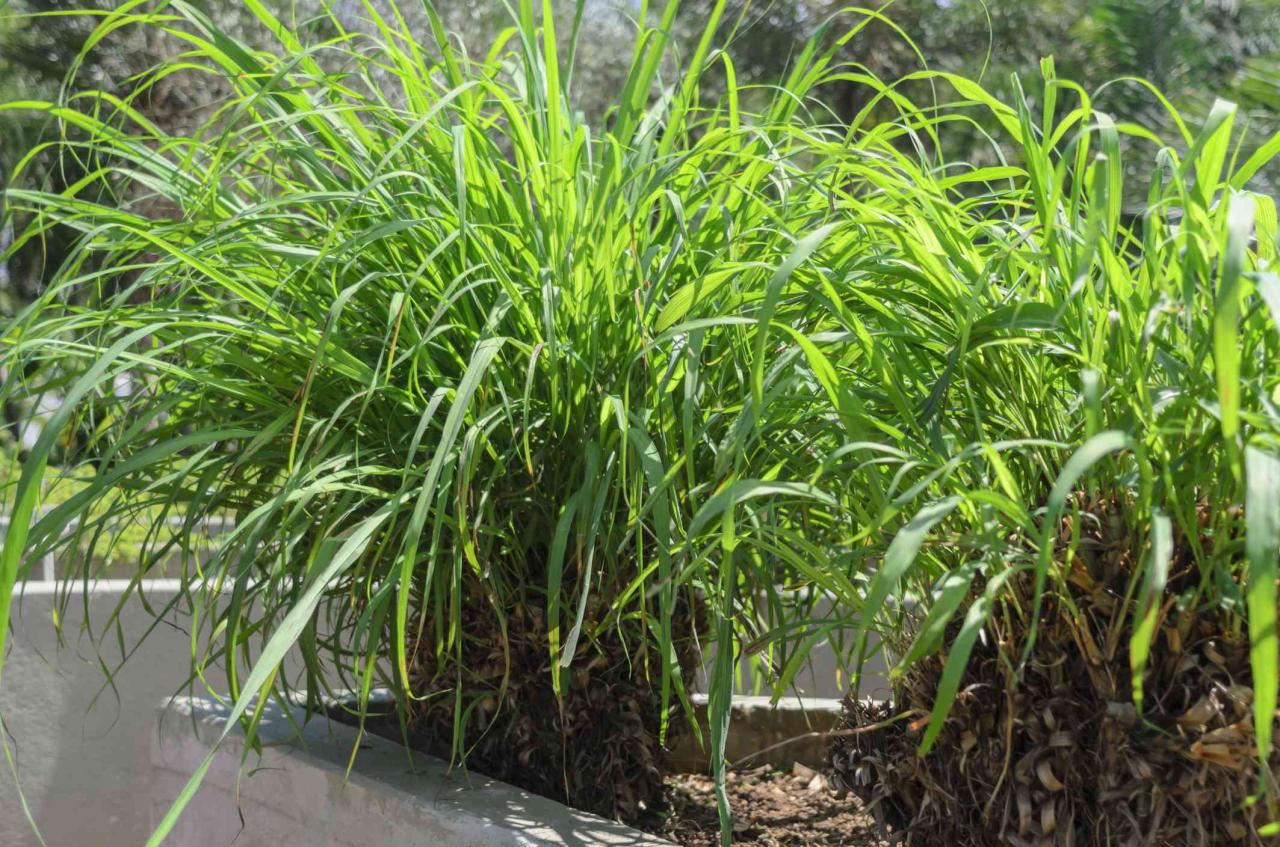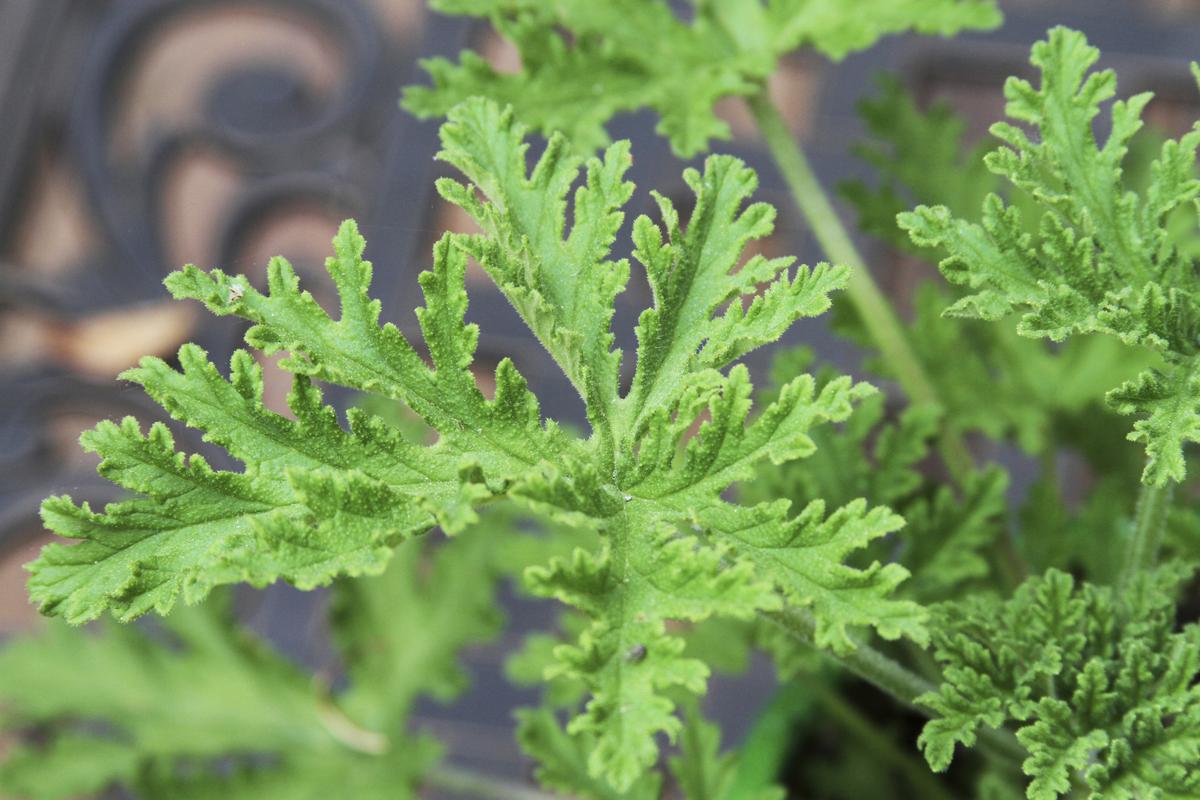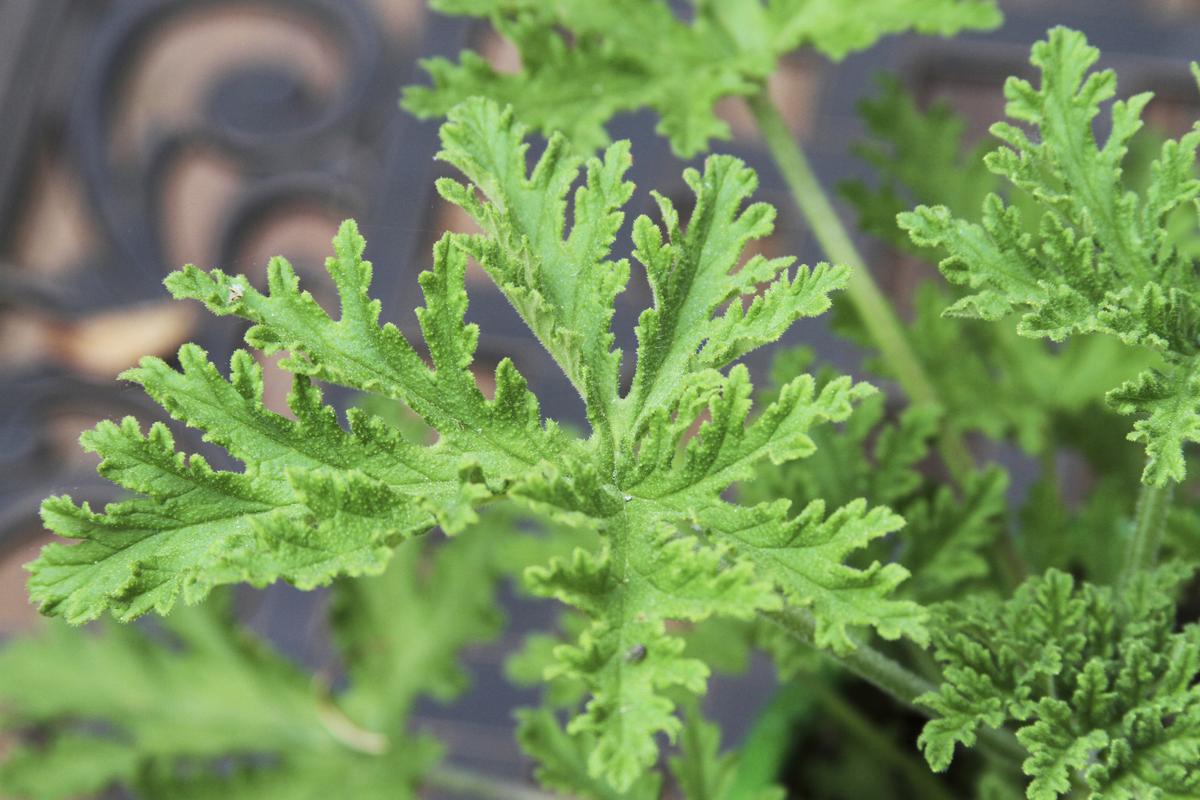How to Achieve a Pest-Free Garden with Citronella Plant: Tips and Techniques – Tired of battling pesky insects in your garden? Citronella plants, known for their natural pest-repelling properties, offer a safe and effective solution. These fragrant plants, with their lemony scent, have been used for centuries to deter a variety of garden invaders.
From understanding the science behind citronella’s effectiveness to mastering the art of planting and maintaining these fragrant allies, this guide provides a comprehensive roadmap to achieving a thriving, pest-free garden.
Citronella plants, native to Southeast Asia, belong to the Cymbopogon genus and are closely related to lemongrass. Their distinctive aroma, attributed to the presence of citronellal, a natural insect repellent, has been harnessed for centuries. The effectiveness of citronella against common garden pests, including mosquitoes, aphids, and whiteflies, has been well documented, making it a popular choice for organic gardeners.
Introduction to Citronella Plants and Their Pest-Repelling Properties
Citronella plants, scientifically known asCymbopogon nardus*, are a natural and effective solution for keeping pesky insects away from your garden. These fragrant grasses, native to Southeast Asia, have been used for centuries for their insect-repelling properties. The distinctive lemony scent of citronella comes from the essential oil extracted from its leaves, which acts as a natural deterrent for many common garden pests.
The History and Origin of Citronella Plants and Their Use in Pest Control
The use of citronella for pest control dates back centuries. In ancient times, people in Southeast Asia used citronella oil in various forms, including incense and candles, to ward off mosquitoes and other insects. The practice spread to other parts of the world, and citronella eventually became a popular ingredient in insect repellents, candles, and other household products.
While citronella plants are known for their pest-repelling properties, you can also create a vibrant, multi-layered garden by incorporating other natural deterrents. For example, ivy, with its dense foliage and natural insecticidal qualities, can provide an additional layer of protection.
To quickly establish a thriving ivy barrier, you can utilize propagation techniques as outlined in Transform a Single Ivy into a Green Wonderland – Propagation Tips Inside!. This will allow you to quickly create a dense, pest-resistant barrier around your garden, complementing the citronella’s natural pest-repelling properties.
Today, citronella remains a widely used natural insecticide, particularly in organic gardening practices.
The Effectiveness of Citronella Against Common Garden Pests
Citronella is effective against a wide range of common garden pests, including:
- Mosquitoes:Citronella oil is known for its ability to repel mosquitoes, which are notorious for spreading diseases like malaria and West Nile virus.
- Flies:The strong scent of citronella can effectively deter flies from your garden, keeping them away from your plants and reducing the spread of diseases.
- Ticks:Citronella oil can also repel ticks, which are known to carry Lyme disease and other harmful pathogens.
- Ants:Citronella can deter ants from invading your garden and disrupting your plants. Its strong scent can act as a natural barrier, keeping ants at bay.
- Aphids:Citronella is also effective against aphids, tiny insects that can damage plants by sucking sap from their leaves.
While citronella is effective against a variety of pests, it’s important to note that its effectiveness can vary depending on the specific species of insect and the concentration of citronella oil used. It is also crucial to use citronella products responsibly and to follow the instructions provided by the manufacturer.
Planting and Growing Citronella Plants

Citronella plants are relatively easy to grow, making them an ideal choice for gardeners of all experience levels. Whether you’re starting from seeds or seedlings, understanding the optimal conditions for planting and growth will ensure your citronella thrives and effectively repels pests in your garden.
Planting Citronella Seeds, How to Achieve a Pest-Free Garden with Citronella Plant: Tips and Techniques
Planting citronella seeds is a cost-effective way to start your citronella plants. However, it requires patience, as germination can take several weeks. Here’s a step-by-step guide to planting citronella seeds:
- Choose the right time:Plant citronella seeds in the spring or early summer after the last frost. The warm soil temperatures will encourage germination.
- Prepare the soil:Citronella plants prefer well-drained soil with a pH of 6.0 to 7.0. Amend the soil with compost or aged manure to improve drainage and fertility.
- Sow the seeds:Sow the seeds about 1/4 inch deep and 12 inches apart. Gently water the soil and keep it consistently moist.
- Maintain moisture:Water the seeds regularly, ensuring the soil remains moist but not soggy. Avoid overwatering, as this can lead to root rot.
- Provide adequate sunlight:Citronella plants require at least 6 hours of direct sunlight per day.
- Thin seedlings:Once the seedlings emerge, thin them out to 12 inches apart. This allows the plants to grow strong and healthy.
Planting Citronella Seedlings
Planting citronella seedlings is a faster and more reliable way to establish your citronella plants. Seedlings are typically available from nurseries or online retailers. Here’s a step-by-step guide to planting citronella seedlings:
- Choose the right time:Plant citronella seedlings in the spring or early summer after the last frost. The warm soil temperatures will help the seedlings establish themselves.
- Prepare the soil:Citronella plants prefer well-drained soil with a pH of 6.0 to 7.0. Amend the soil with compost or aged manure to improve drainage and fertility.
- Dig a hole:Dig a hole slightly larger than the seedling’s root ball. The hole should be deep enough to accommodate the roots without bending or folding them.
- Place the seedling:Gently remove the seedling from its container, taking care not to disturb the roots. Place the seedling in the hole, ensuring the top of the root ball is level with the ground.
- Backfill the hole:Carefully backfill the hole with soil, gently firming it around the roots to ensure good contact. Avoid compacting the soil too tightly.
- Water thoroughly:Water the newly planted seedling thoroughly to settle the soil and help the roots establish themselves.
- Provide adequate sunlight:Citronella plants require at least 6 hours of direct sunlight per day.
Ideal Soil Conditions
Citronella plants thrive in well-drained soil that is rich in organic matter. A slightly acidic to neutral pH (6.0 to 7.0) is ideal. If your soil is heavy clay, amend it with compost or aged manure to improve drainage and aeration.
Avoid planting citronella in areas with poor drainage, as this can lead to root rot.
Sunlight Requirements
Citronella plants require at least 6 hours of direct sunlight per day to grow strong and healthy. They can tolerate some shade, but they will not produce as much foliage or oil. Choose a sunny spot in your garden that receives at least 6 hours of direct sunlight.
Optimal Time for Planting Citronella
The optimal time to plant citronella varies depending on your climate. In warmer climates, citronella can be planted year-round. In colder climates, it’s best to plant citronella in the spring or early summer after the last frost. Avoid planting citronella too late in the season, as it may not have enough time to establish itself before the first frost.
Effective Placement and Use of Citronella Plants in the Garden
Strategic placement of citronella plants is crucial to maximize their pest-repelling effectiveness. By understanding the plant’s growth habits and the pests you aim to deter, you can create a garden that naturally discourages unwanted visitors.
Strategic Placement of Citronella Plants
The ideal placement of citronella plants is a critical aspect of their effectiveness. Consider these factors for optimal results:
- Around Entry Points:Place citronella plants near doorways, windows, and other areas where pests might enter your garden. This creates a natural barrier, discouraging them from entering.
- Near Vulnerable Plants:Strategically place citronella plants around susceptible plants like roses, vegetables, and fruit trees. Their scent acts as a natural repellent, deterring pests from damaging these valuable plants.
- Wind-Protected Areas:Citronella’s scent is most effective when it’s not dispersed by strong winds. Choose locations sheltered from prevailing winds to maximize the scent’s impact.
- Spacing and Density:Plant citronella plants in groups of three to five for greater effectiveness. Space them about 12-18 inches apart to allow for optimal growth and scent diffusion.
Effectiveness of Citronella Plants Against Specific Pests
Citronella plants are known to deter various garden pests, but their effectiveness can vary depending on the specific species. This table summarizes the effectiveness of citronella against common garden pests:
Pest |
Effectiveness |
Comments |
|---|---|---|
Mosquitoes |
High |
Citronella oil is a well-known mosquito repellent. |
Flies |
Moderate |
Citronella can deter some flies, but its effectiveness against all types may vary. |
Ants |
Low |
Citronella may deter some ant species, but it’s not a guaranteed solution. |
Aphids |
Moderate |
Citronella can help deter aphids, but other pest control methods may be necessary. |
Whiteflies |
Low |
Citronella may have limited effectiveness against whiteflies. |
Combined Pest Control Methods
While citronella plants can be a valuable tool in pest control, they are not a standalone solution. Combining citronella with other methods enhances their effectiveness and creates a more comprehensive pest management strategy:
- Companion Planting:Pairing citronella with other pest-repelling plants like marigolds, lavender, and garlic can amplify their collective impact.
- Natural Pesticides:Incorporating natural pesticides like neem oil or insecticidal soap alongside citronella plants can provide additional protection.
- Physical Barriers:Using netting or other physical barriers to prevent pests from accessing your plants complements the repellent properties of citronella.
- Good Garden Hygiene:Maintaining a clean and tidy garden environment, removing debris, and weeding regularly reduces pest-attracting conditions.
Maintaining Citronella Plants for Optimal Pest Repellency

Citronella plants, like any other plant, require proper care and maintenance to thrive and effectively repel pests. Providing them with the right conditions and attention ensures their health and potency, maximizing their pest-repelling capabilities.
Watering Citronella Plants
Regular watering is crucial for citronella plants, especially during hot and dry periods. However, overwatering can lead to root rot, which can harm the plant.
- Water the plant deeply but infrequently, allowing the soil to dry slightly between waterings.
- Ensure proper drainage to prevent waterlogging.
- During the growing season, water more frequently, but avoid overwatering.
- Reduce watering frequency during the winter months when the plant is dormant.
Fertilizing Citronella Plants
Citronella plants benefit from regular fertilization, especially during their growing season. This provides them with the necessary nutrients for healthy growth and robust oil production.
- Use a balanced fertilizer formulated for citrus trees or flowering plants.
- Apply fertilizer every 4-6 weeks during the growing season.
- Avoid over-fertilizing, as it can damage the plant.
- Reduce fertilization frequency during the winter months.
Pruning and Deadheading Citronella Plants
Regular pruning and deadheading are essential for maintaining the health and shape of citronella plants.
- Prune the plant regularly to encourage bushier growth and prevent legginess.
- Remove dead or diseased leaves and stems to promote new growth.
- Deadhead spent flower stalks to encourage further flowering.
- Pruning can also help control the plant’s size and shape to fit the desired garden space.
Protecting Citronella Plants from Disease and Pests
Citronella plants are generally resistant to disease and pests, but they can still be susceptible to certain problems.
Creating a thriving, pest-free garden can be as simple as planting citronella, a natural insect repellent. For a truly flourishing garden, consider adding ivy to your landscape. You can easily propagate ivy from cuttings, following the simple tips outlined in this comprehensive guide, How to Transform Ivy Cuttings into Thriving Plants – Propagation Tips.
With both citronella and ivy, you’ll be on your way to a beautiful and healthy garden.
- Inspect the plant regularly for signs of disease or pests, such as leaf discoloration, wilting, or insect infestations.
- Remove any infected or damaged leaves or stems immediately.
- Avoid overwatering, which can lead to root rot and other fungal diseases.
- Use organic pest control methods, such as neem oil or insecticidal soap, if necessary.
Additional Tips and Techniques for a Pest-Free Garden
While citronella plants offer a natural and effective method for pest control, incorporating additional strategies can further enhance your garden’s defense against unwanted visitors. Combining citronella with other natural methods and companion plants creates a multifaceted approach that maximizes pest repellency and promotes overall garden health.
Alternative Natural Pest Control Methods
Beyond citronella, various natural methods can deter pests and maintain a healthy garden ecosystem. These methods often work in tandem with citronella, amplifying their effectiveness.
- Diatomaceous Earth:This fine powder, made from fossilized diatoms, acts as a physical barrier against insects, dehydrating them upon contact. It is particularly effective against crawling insects like ants and slugs.
- Neem Oil:Extracted from the neem tree, this oil disrupts insect growth and reproduction, offering a natural and effective pest control solution. Neem oil can be applied to plants as a spray or diluted in water for irrigation.
- Insecticidal Soap:This soap-based solution disrupts the cell membranes of insects, leading to their demise. It is particularly effective against aphids, mealybugs, and whiteflies.
- Hot Pepper Spray:The capsaicin in hot peppers acts as a natural repellent, deterring insects and animals from feeding on plants.
Companion Planting for Pest Control
Companion planting involves strategically placing different plant species together, leveraging their beneficial interactions. Some plants naturally repel pests, while others attract beneficial insects like ladybugs and lacewings that prey on harmful pests.
- Marigolds:These vibrant flowers repel nematodes, whiteflies, and other common garden pests. They are particularly effective when planted near tomatoes, peppers, and other vegetable crops.
- Basil:This aromatic herb repels flies, mosquitoes, and other flying insects, while attracting beneficial wasps that prey on aphids and caterpillars.
- Garlic:Garlic’s pungent aroma deters aphids, spider mites, and other pests. Planting garlic near roses can help protect them from aphids and other insect infestations.
- Lavender:Lavender’s fragrant flowers repel moths, fleas, and other insects. Planting lavender near vegetable crops can help deter pests and attract beneficial insects.
Comparison of Pest Control Methods
Method |
Benefits |
Drawbacks |
|---|---|---|
Citronella Plants |
Natural, aesthetically pleasing, long-lasting, effective against mosquitoes and other flying insects |
May not be effective against all types of pests, requires consistent maintenance, may not be suitable for all climates |
Diatomaceous Earth |
Effective against crawling insects, non-toxic to humans and pets, readily available |
Can be messy, needs to be reapplied after rain, may not be effective against all pests |
Neem Oil |
Broad-spectrum pest control, environmentally friendly, effective against a wide range of insects |
May require repeated applications, can be toxic to some beneficial insects, may leave a residue on plants |
Insecticidal Soap |
Quick-acting, effective against soft-bodied insects, safe for humans and pets |
May not be effective against all pests, requires repeated applications, can be harsh on plants |
Hot Pepper Spray |
Natural, effective against various pests, readily available |
May be irritating to the skin, may not be effective against all pests, requires frequent application |
Companion Planting |
Natural, aesthetically pleasing, attracts beneficial insects, promotes overall garden health |
May require careful planning and knowledge of plant interactions, may not be effective against all pests |
Last Word: How To Achieve A Pest-Free Garden With Citronella Plant: Tips And Techniques

By embracing the power of citronella plants and incorporating them strategically into your garden, you can create a thriving ecosystem that naturally discourages pests. Remember, patience and consistency are key to achieving a pest-free haven. With a little effort, you can enjoy the beauty and bounty of your garden without the unwanted intrusion of pesky insects.
FAQ Explained
What is the best time of year to plant citronella?
The optimal time to plant citronella depends on your climate. In warmer regions, spring or early summer is ideal. In colder climates, it’s best to start seeds indoors in early spring and transplant them outdoors after the last frost.
How often should I water my citronella plants?
Citronella plants prefer well-drained soil and regular watering, especially during hot, dry weather. Water deeply but infrequently, allowing the top inch of soil to dry out between waterings.
Can I use citronella plants indoors to repel mosquitoes?
While citronella plants can deter mosquitoes outdoors, their effectiveness indoors is limited. The scent of citronella oil is more potent than the scent of the plant itself. Consider using citronella candles or diffusers for indoor mosquito control.
